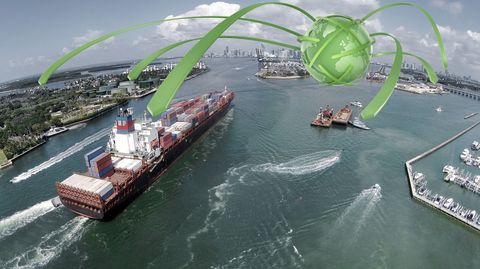The US is one of the most important markets in the world for export-driven businesses, meaning any organization with an international sales strategy needs to be aware of all the legal processes involved in distributing goods in the country.
For companies that are planning to ship materials to the US by ocean vessel, this means getting to grips with the Importer Security Filing and Additional Carrier Requirements, also known as 10+2 filing. Introduced in January 2009, the regulations were implemented by US Customs and Border Protection (CBP) to help identify high-risk shipments, allowing the agency to crack down on smuggling and ensure cargo safety and security.
Companies that fail to comply with the rules will be subject to penalties and can put themselves under increased scrutiny and a heavier inspection burden. Additionally, it could result in their shipments being delayed, creating supply chain bottlenecks. As such, it is vital to the running of a business that this process is carried out smoothly.
How 10+2 filings work
The key requirement of Importer Security Filings (ISF) involves the transmission of containerized cargo information to CBP at least 24 hours before goods intended for shipping to the US are loaded on to an ocean vessel headed for the country. This requirement only applies to cargo arriving by ocean vessel, rather than any other mode of transportation. Generally speaking, the importer or its authorized agency will be responsible for submitting the filing.
In their submission, importers must provide a total of eight data elements no later than 24 hours before the cargo is laden aboard the US-bound vessel, including:
- the name and address of the seller
- the name and address of the buyer
- the importer of record number/FTZ applicant identification number - this may be the Federal Employer Identification Number, Social Security Number or Customs Assigned Importer Number of the entity liable to pay duties
- any relevant consignee numbers for the individuals or firms in the US on whose account the merchandise is being shipped
- the name and address of the manufacturer or supplier
- the name and address of the first party who will physically receive the goods after it is released by CBP
- the country of origin
- the commodity's Harmonized Tariff Schedule of the US (HTSUS) number, which must be provided to the six-digit level, but may also be provided to the ten-digit level
The ninth and tenth data elements need to be submitted as early as possible, but no later than 24 hours prior to the ship's arrival at a US port. These are:
- the name and address of the stuffing location
- the name and address of the consolidator (stuffer) of the container
Meanwhile, an additional two elements are required from the cargo's carrier, completing the list of "10+2" pieces of information that US border control regulators will need to know. These are:
- the vessel stow plan, include the ship's name, operator and voyage number, as well as the container operator, the equipment number, size and type, the stow position, the Hazmat code, port of lading and port of discharge
- any container status messages, which must be submitted no later than 24 hours after the message is entered into the carrier's equipment tracking system
All ISF filings are expected to be submitted electronically via the Automated Broker Interface (ABI) or the Automated Manifest System (AMS).
The benefits of using an automated solution
The Importer Security Filing is a crucial step in US-bound shipping, but it can be a complex process, which is why many companies rely on automated solutions capable of taking electronic data from supply chain partners and automatically extracting the necessary data elements required by CBP.
One such solution is MIC's United States Customs solution, a web-based system that can automate the processes for multiple facilities from a single hosted or licensed instance. It allows users to take advantage of a standardized, organized and defined process for handling 10+2 filings and other key regulatory requirements.
By committing to the right approach and technology solutions, companies can ensure they do not fall foul of 10+2 and facilitate a smooth journey for their important goods when shipping to US partners.






